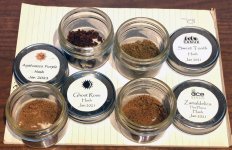Hi folks,
Been making dry sift a long while, however I’ve noticed a few things and am looking for some input.
I’ve got a good quantity of 2020 outdoor beautiful blonde that when sifted into a bag compacted under its own weight in a big round brick. It’s got some melting qualities. It was hard to break up to try and refine a smaller amount further.
However I’ve noticed a few things: during the aging (further drying and in a sealedbag/refrigerator) process after initial sifting, the powder seems to become crumbly and hard again, is this a direct relation of moisture content, or something that happens during aging? With a bit of heat 30c it becomes fairly playable however and will start to darken beyond that.
i suppose blonde has always been a bit harder when talking of imports?
How is it that the afghani hashes stay so soft and playable? Adulterants or further refining?
Been making dry sift a long while, however I’ve noticed a few things and am looking for some input.
I’ve got a good quantity of 2020 outdoor beautiful blonde that when sifted into a bag compacted under its own weight in a big round brick. It’s got some melting qualities. It was hard to break up to try and refine a smaller amount further.
However I’ve noticed a few things: during the aging (further drying and in a sealedbag/refrigerator) process after initial sifting, the powder seems to become crumbly and hard again, is this a direct relation of moisture content, or something that happens during aging? With a bit of heat 30c it becomes fairly playable however and will start to darken beyond that.
i suppose blonde has always been a bit harder when talking of imports?
How is it that the afghani hashes stay so soft and playable? Adulterants or further refining?




